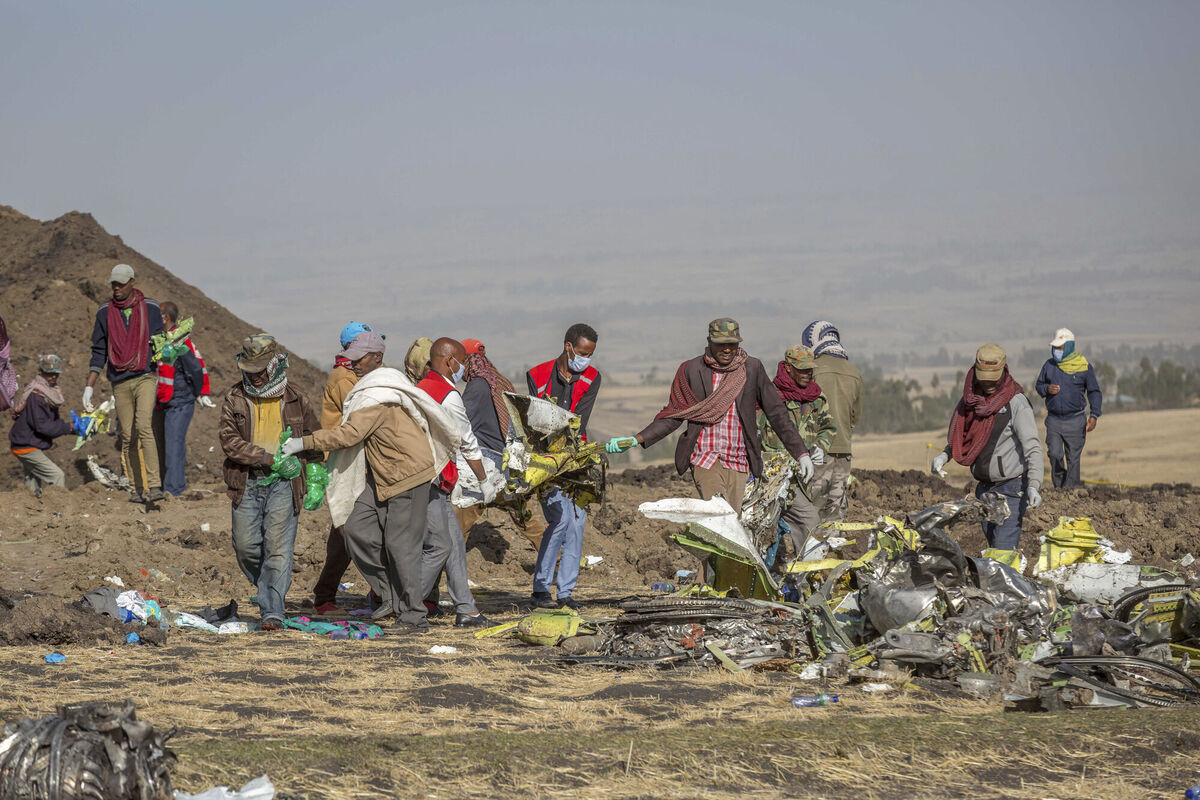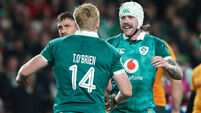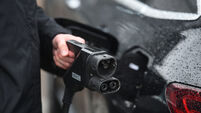Most of the $2.5bn paid by Boeing in Max 737 case will go to airlines

A Boeing 737 Max gives a display during the opening day of the Farnborough International Airshow in Hampshire. File Picture
Boeing reached a $2.5bn (€2bn) agreement to settle a criminal charge that it defrauded the US government by concealing information about the 737 Max, the ill-fated jet model involved in two fatal crashes that killed 346 people.
The planemaker entered into a deferred prosecution agreement in a court in Texas. In turn, the US Justice Department will dismiss the charge against Boeing after three years if the company cooperates with the government, including by making current and former officials available to testify before a federal grand jury or in trials.
“The tragic crashes of Lion Air Flight 610 and Ethiopian Airlines Flight 302 exposed fraudulent and deceptive conduct by employees of one of the world’s leading commercial airplane manufacturers,” David Burns, acting assistant attorney general of the Justice Department’s Criminal Division, said in a statement.
The settlement caps a two-year criminal investigation into the Max, which crashed twice in a five-month span and devastated Boeing’s reputation for engineering prowess.
The company’s admissions are highly unusual and stand in stark contrast to decades of airline accident investigations. While aircraft designs have often been cited as contributing to accidents, it’s extremely rare for such issues to be linked to intentional deception by company officials. Boeing shares were little changed in Friday trade.
“Entering into this resolution is the right thing for us to do -- a step that appropriately acknowledges how we fell short of our values and expectations,” Boeing chief executive Dave Calhoun said in a message to employees.
“This resolution is a serious reminder to all of us of how critical our obligation of transparency to regulators is, and the consequences that our company can face if any one of us falls short of those expectations,” he said.
Robert Clifford, a lawyer representing relatives of the crash victims, said family members were insulted by the pact. The settlement will have no bearing on pending civil litigation, he said.
“The allegations in the deferred prosecution agreement are just the tip of the iceberg of Boeing’s wrongdoing -- a corporation that pays billions of dollars to avoid criminal liability while stonewalling and fighting the families in court,” Mr Clifford said in a statement.
Boeing has estimated it faces more than $20bn in Max-related expenses, while losing market share to rival Airbus as sales faltered during the jet’s lengthy grounding.
Most of the money in the settlement will go to airlines and lessors. Of the $2.5bn, Boeing has already set aside $1.77bn to reimburse Max customers. The company will also establish a $500m fund for victims’ beneficiaries.
In addition, Boeing will pay a $243.6m criminal penalty. That represents the money the company saved by avoiding the need to require 737 pilots to undergo full flight-simulator training before flying the Max, according to the deferred prosecution agreement.
The Chicago-based company is scheduled to report earnings for the quarter on January 27.
The financial hit to Boeing is “less severe than the headline suggests,” Cai von Rumohr, an analyst with Cowen & Co, said. The FAA lifted its grounding in November, provided that airlines complete a list of repairs and put pilots through simulator training.
The Max tragedies spurred the criminal investigation and separate probes. Several investigative reports have found that the company altered a flight control system, but didn’t fully explain the changes to Federal Aviation Administration inspectors.
The deferred prosecution agreement focuses on the actions of two former Boeing employees, whose colourful and sometimes crass messages sparked outrage at the FAA and on Capitol Hill.

The two deceived FAA staff by providing “misleading statements, half-truths, and omissions,” according to the agreement.
“The misconduct was neither pervasive across the organidation, nor undertaken by a large number of employees, nor facilitated by senior management,” the agreement said.
The deception involved a flight-control feature known as the Manoeuvering Characteristics Augmentation System, the government said.
In the accidents, a malfunctioning sensor caused Mcas to repeatedly make the jets dive. While the system could be disabled, pilots hadn’t been instructed in how Mcas worked and in both crashes, they eventually lost control.
The two former Boeing employees, who helped draft the pilot training materials, learned that Mcas had been expanded to respond to a greater range of flight conditions, but never alerted their FAA counterparts, according to a statement of facts attached to the Boeing agreement.
Although the men aren’t identified in the filing, one of them is Mark Forkner, Boeing’s chief technical pilot for the 737 Max programme, said a person familiar with the matter.
A lawyer for Mr Forkner, David Gerger, said when the messages were disclosed that the pilot believed the plane was safe and he didn’t mislead the FAA. At least part of the reason Mr Forkner had expressed concerns was the result of software in a simulator and not the plane itself, Mr Gerger said.
Mr Forkner later proposed that regulators delete a reference to Mcas in a document outlining the FAA-mandated training requirements for the plane. The final version published by the agency lacked information about Mcas. Aircraft manuals and pilot-training materials also didn’t have information about the system.
The criminal investigation into how the plane was designed and approved began after the October 29, 2018, crash off the coast of Indonesia of a Lion Air flight.
The deception continued after the accident, Boeing admitted. The second Max crash occurred in Ethiopia on March 10, 2019, near Addis Ababa.










